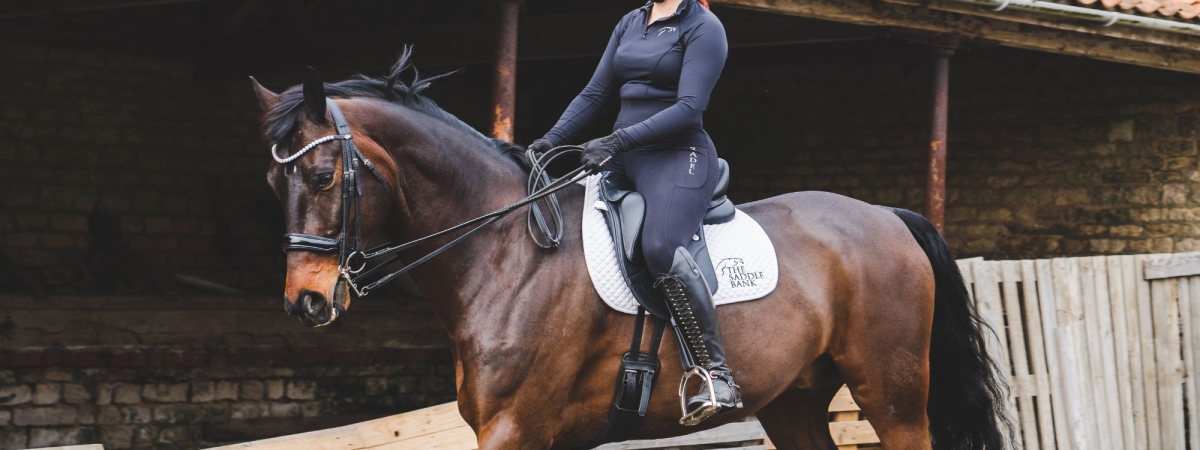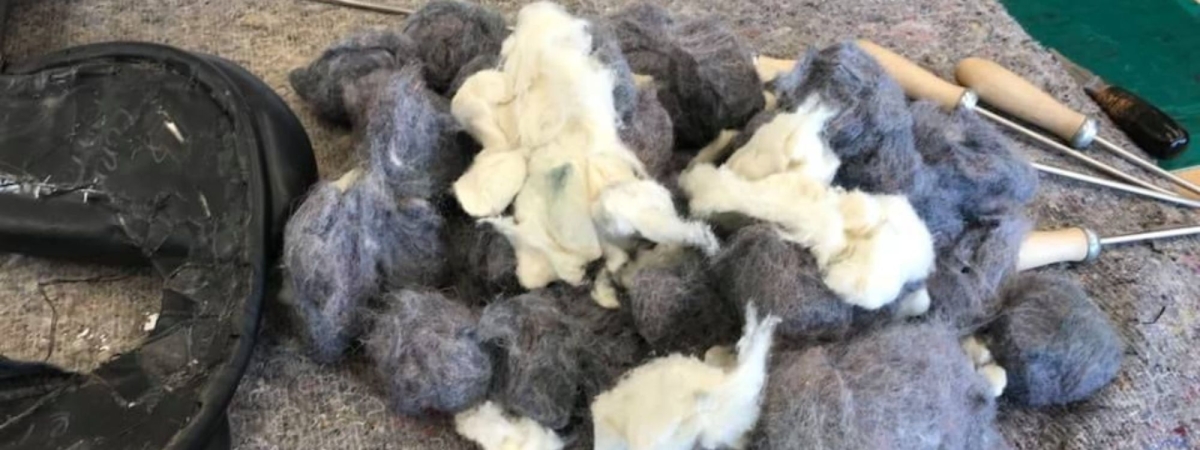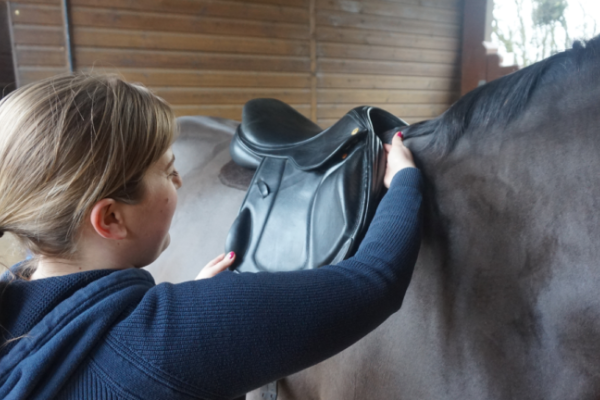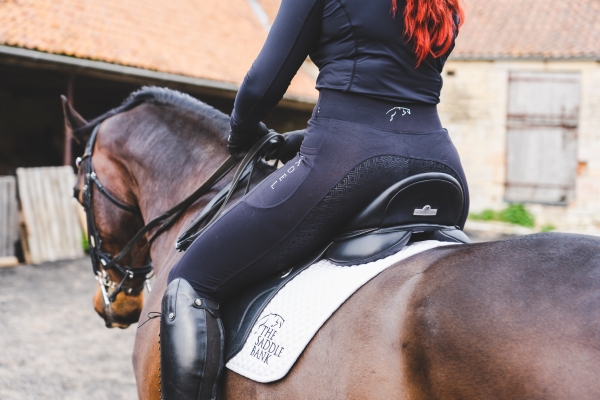What are the most comfortable saddles for horses?
Saddles were initially created to distribute rider weight over the horse’s back to help improve the comfort and welfare of the horse. However, over the years many poor quality saddles have been developed without consideration for the horses anatomy which has led to horses being in pain, and many horse responding by 'being naughty'. A good quality, well fitted saddle should eliminate any pain from your horse, and as a result a happy comfortable horse is much more willing than a horse struggling to walk due to pinching, rubbing, saddles too long etc. Let’s take a look at what types of saddle can be the most comfortable for horses.

What is a comfortable saddle?
A comfortable saddle is a one that both supports the musculature of the horse and that also allows for freedom of movement at the same time. Most modern saddles are built on a tree which is fairly rigid, but does still provide some movement to accommodate the motion of the back during exercise. The panels underneath the saddle are padded, sometimes with different materials, which allows for the changing shapes of the back during movement, but also helps to reduce saddle pressures and distribute them evenly across the back without creating concentrated areas of pressure.
Different Panel Types
Flocked saddles
Traditionally, the panels of a saddle were padded out with flocking - which is usually made from natural or synthetic wool. Flocking a saddle is an art in itself, as the panels need to be filled with just the right amount of flocking! It can’t be too hard, but it also can’t be too soft - a saddle which hasn’t been flocked correctly can sometimes do just as much damage as a saddle which doesn’t fit properly. Saddle flocking needs to be checked regularly by your saddle fitter, as over time it can compress and unbalance the saddle. The benefits of flocking is that it can very easily form to the shape of your horses back, assisting in saddle fit, and can be adjusted to compensate for any conformational issues horses might have - it can also be easily removed and replaced for a relatively small cost!
Foam Panels
Panels which are filled with foam tend to be a lot lighter and less bulky than those with flocking, sit closer to the horses back and are typically more affordably priced. Many of the higher end saddle manufacturers have now moved toward foam paneling, as they can offer a more versatile fit with custom made foam inserts for the panels. With advancements in technology, more modern foam panels can handle repetitive stress more successfully, meaning that less long term maintenance is needed to keep a saddle in top shape. However, because foam doesn’t conform to shapes well, for horses that are asymmetrical, a foam panel may not be as suitable as a flocked one. They can also be expensive to repair or replace as they typically have to be taken away to be fixed. Even with a correctly fitting foam panel, they often need to be paired with a half pad, especially if there have been any changes in shape of the horse - but don’t forget that this would need to be fitted with the saddle by the saddle fitter.
CAIR Panels
CAIR systems replace the traditional flocking system with two separate sealed units in each panel. They are exclusive to the Bates, Wintec and Arena brands, and are able to mould to the horse, meaning the weight can be much more easily distributed because air is much more fluid. The system is backed by scientific research which assessed the impact of the CAIR system on the performance of horses, finding in two separate studies that the system greatly increased the performance of horses. The CAIR panels are easily changed by a saddler where needed. They are designed to work alongside the Easy Change Gullet Bars and Easy Fit Riser Systems to get the ultimate fit for your horse, to learn more about CAIR click here.

Correct fitting and horse comfort
The Society of Master Saddlers has a set of guidelines for their qualified saddlers to follow for fitting saddles to a static (not moving) horse.
• Panels should have a smooth and consistent contact with the horses back,
• The saddle should be balanced front to back and stable
• Girth straps should be in line with the horses girth groove
• The gullet needs to clear the spinous processes of the horses back
• The weight bearing area of the saddle shouldn’t go past T18
• The tree should be positioned to allow free movement of the scapula
• The width and shape of the head plate should match the contour of the horse.
Movement of the horse and the fit of the saddle to the rider can also affect saddle fit, so it is important to consider all aspects when buying a saddle, and to have it fitted both statically and dynamically to ensure a good fit. Don’t forget that horses change shape throughout the seasons, and conformation - especially with the back and wither areas - can change with age, so regular saddle checks are important to prevent any discomfort to the horse.
You can learn more about how to identify a poorly fitted saddle in our Recognising Saddle Fit Issues course which is a great tool to help you recognise potential issues.
Importance of saddle fit and regular checks
Having a correctly fitting saddle is just as important as having a well fitting pair of shoes. The region the saddle sits in consists of thousands of sensitive nerve endings, muscles and skeletal structures such as the spine and the rib cage. Recent studies have shown that horses have more pain receptors in their skin than humans do, so making sure any discomfort is reduced can only be of benefit to the welfare of the horse and their quality of life. Often with poor saddle fit, behavioural problems and poor performance can be the first signs that something is wrong - watching out for symptoms such as excessive tail swishing, sensitivity over the back and resistance to work can be signs that a saddle isn’t fitting correctly.
In some circumstances, horses can also begin to develop negative associations with the saddle because of pain or discomfort, leading them to show signs of tension when saddles are in their field of vision.
Don’t forget that The Saddle Bank offer the Recognising Saddle Fit Issues course which is a great tool to help you recognise potential issues.












